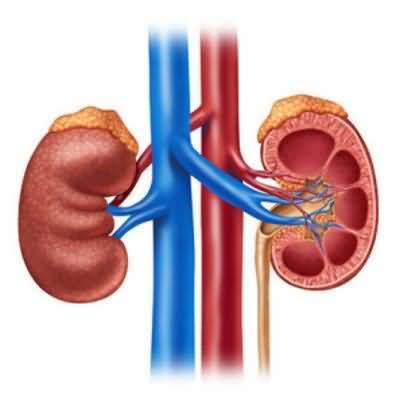Vitamin D
Vitamin D
Vitamin D General Vitamin D is a fat-soluble vitamin that is naturally present in very few foods, added to others, and available as a dietary supplement. It is also produced endogenously when ultraviolet rays from sunlight strike the skin and trigger vitamin D synthesis. Vitamin D obtained from sun exposure, food, and supplements is biologically inert and must undergo two hydroxylations in the body for activation. The first occurs in the liver and converts vitamin D to 25-hydroxyvitamin D [25(OH)D], also known as calcidiol. The second occurs primarily in the kidney and forms the physiologically active 1,25-dihydroxyvitamin D [1,25(OH)2D], also known as calcitriol Vitamin D promotes calcium absorption in the gut and maintains adequate serum calcium and phosphate concentrations to enable normal mineralization of bone and to prevent hypocalcemic tetany. It is also needed for bone growth and bone remodeling by osteoblasts and osteoclasts . Without sufficient vitamin D, bones can become thin, brittle, or misshapen. Vitamin D sufficiency prevents rickets in children and osteomalacia in adults . Together with calcium, vitamin D also helps protect older adults from osteoporosis. Vitamin D has other roles in the body, including modulation of cell growth, neuromuscular and immune function, and reduction of inflammation . Many genes encoding proteins that regulate cell proliferation, differentiation, and apoptosis are modulated in part by vitamin D [1]. Many cells have vitamin D receptors, and some convert 25(OH)D to 1,25(OH)2D. Serum concentration of 25(OH)D is the best indicator of vitamin D status. It reflects vitamin D produced cutaneously and that obtained from food and supplements [1] and has a fairly long circulating half-life of 15 days [5]. 25(OH)D functions as a biomarker of exposure, but it is not clear to what extent 25(OH)D levels also serve as a biomarker of effect (i.e., relating to health status or outcomes). Serum 25(OH)D levels do not indicate the amount of vitamin D stored in body tissues. In contrast to 25(OH)D, circulating 1,25(OH)2D is generally not a good indicator of vitamin D status because it has a short half-life of 15 hours and serum concentrations are closely regulated by parathyroid hormone, calcium, and phosphate. Levels of 1,25(OH)2D do not typically decrease until vitamin D deficiency is severe. There is considerable discussion of the serum concentrations of 25(OH)D associated with deficiency (e.g., rickets), adequacy for bone health, and optimal overall health, and cut points have not been developed by a scientific consensus process. Based on its review of data of vitamin D needs, a committee of the Institute of Medicine concluded that persons are at risk of vitamin D deficiency at serum 25(OH)D concentrations <30 nmol/L (<12 ng/mL). Some are potentially at risk for inadequacy at levels ranging from 30–50 nmol/L (12–20 ng/mL). Practically all people are sufficient at levels ≥50 nmol/L (≥20 ng/mL); the committee stated that 50 nmol/L is the serum 25(OH)D level that covers the needs of 97.5% of the population. Serum concentrations >125 nmol/L (>50 ng/mL) are associated with potential adverse effects


















